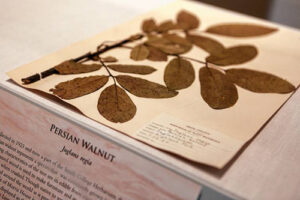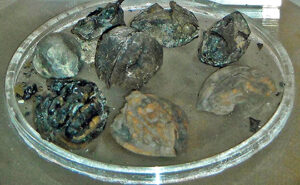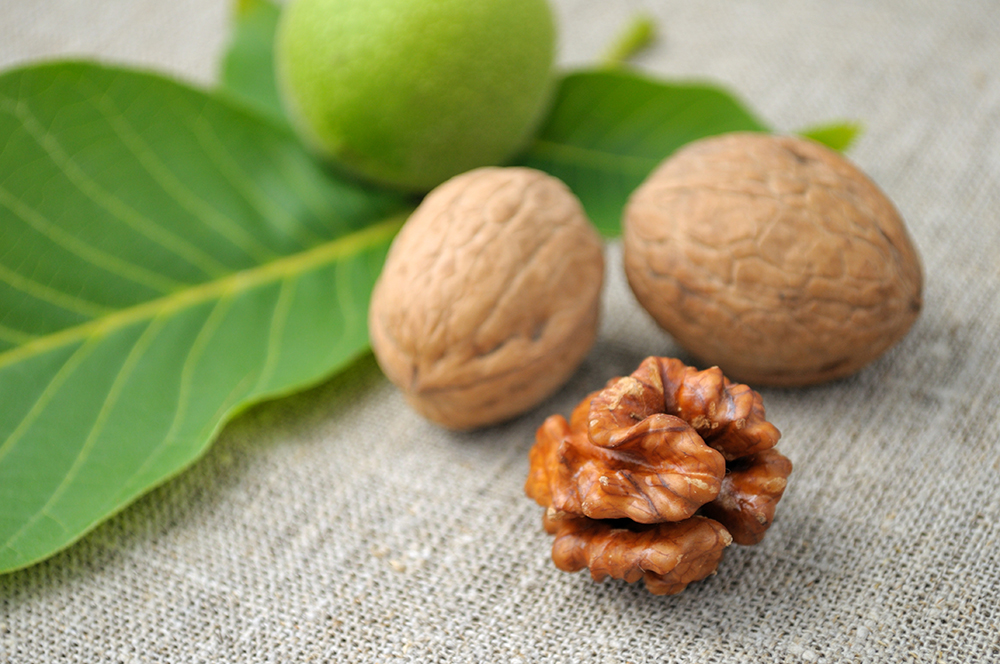The common walnut is anything but common. As stories tell us, its recent spread in Europe – through the ancient Grecian empire – happened in the early centuries BCE, when saplings were sent as gifts from a Persian or more probably an Achaemenid king. Hence the plant’s botanical name Juglans regia, the king’s nut, and its modern secondary name of Persian walnut. Later, the Romans also acquired a taste for walnuts and spread them throughout their imperial networks as well. They are indeed one of humanity’s oldest tree foods, with archaeological evidence of their consumption from 7,000 BCE in what is now Iran. Traditionally, the trees were thought to come from Central Asia or Persia and to have spread west and east from there. Modern botany, ecology, and genetics, however are suggesting a much more complex and ancient history for the walnut.
Western Texts and Archaeology
Pliny the Elder wrote extensively about the mostly medicinal uses of walnuts in the 23rd volume of his Natural History (chapters 45 and 77), although he does say that when fresh, the nuts are agreeable to eat. He notes that walnuts mixed with rue are good for an inflammation of the throat near the tonsils called quinsy, and they are good for some severe bowel diseases (tenesmus). Pliny also notes that walnuts make good plasters for sprains and other external inflammations, and when mixed with onions, salt and honey they are good for dog or human bites, including those of a mad dog (rabid). They were mixed with wine or oil and used to anoint infants or the elderly to get their hair to grow.
One of the most important uses of walnuts in the ancient world was to prevent poisoning or to counteract the effects of poison. On that subject, Pliny I wrote about a recipe to prevent poisoning that was seized when Cneius Pompeius exploited the personal chambers of the Pontian monarch Mithridates when he defeated him in 63 BCE. Pliny claims that written in Mithridates own hand was a poison antidote that called for the user to:
Take two dried walnuts, two figs, and twenty leaves of rue; pound them all together, with the addition of a grain of salt; if a person takes this mixture fasting, he will be proof against all poisons for that day.
Other ancient European writers who casually remarked on the existence of walnuts were Varro in his Three Books on Agriculture and the great early botanist Theophrastus in his Historia Plantarum. Writing in the 1st Century BCE, Varro notes that fresh walnuts were delicious and older, dry ones were not. He also remarks that walnuts can render select other trees or plants sterile when place too close or upstream from them, a phenomenon we now call allelopathy. Today this is well known in black walnut (Juglans nigra) trees a different species from Juglans regia. Theophrastus, student and successor to Plato at the Lyceum, also mentions allelopathy, as well as other walnut properties such as strength of its wood in the fourth and third centuries BCE. Interestingly, Theophrastus writes of trees being gifts of a Persian king, but he also discusses well-established stands of walnut trees that would take hundreds of years to produce. So, if the story of the trees coming from Persia is true, it must have happened well before Theophrastus observed and interpreted the natural world.
 |  |
The eruption of Vesuvius in 79 AD that destroyed, Pompeii, Herculaneum, and several other Roam settlements, also left evidence of walnut eating. In Pompeii, carbonized walnuts as well as walnut leaves preserved in volcanic ash have been found. And in other areas, walnut shells also indicate that people may have snacked on walnuts as Vesuvius rained destruction down on them. Interestingly, these artifacts may indicate that the adoption of walnuts as food rather than as medicine was underway by this time.
Asian Texts and Genetic Analysis
By far, the most important recent work from Asia on the origin of walnuts comes from Chinese genetic analysis by Feng etal., of walnut stands from several places around China – Xinxiang, the Northeast, and Southwest. This work shows that Chinese J. regia fall into three distinct clades that were separated from each other approximately 2.79 and 1.13 million years ago. This work is significant, because it suggests that walnut trees were present in some areas of China from the early Pleistocene, and that isolated stands of them survived the last ice age or glacial maximum. Genetic diversity of Chinese walnuts at common areas is less than that found in walnuts from some areas of Central and Western Asia, indicating that these western areas may indeed be the source of J. regia. However, accepted wisdom is that the walnut spread both west and east from its origin in relatively modern times. The recent science from China indicates that walnuts were in China long before Cyrus. So, modern science, is throwing into doubt the idea of a recent radiation from Persia or Central Asia.
Genetic evidence from modern stands of walnut trees in Kyrgyzstan – largely from the Ferghana – show that these trees are all of modern anthropogenic seeding. Most of these stands of walnuts are datable to around 1000 ACE, with the oldest amongst them dated to 2000 years before the present. From travelers, merchants, and soldiers sowing walnuts as they traverse the Silk Road. The absence of ancient walnut trees in Kyrgyzstan is probably due to its climate history and multiple periods of glaciation and the slow retreat of those glaciers, producing treeless tundra in their wake.
The idea of a Pleistocene or even Pliocene radiation of walnut trees from Central or Western Asia to the far east and Europe is not incompatible with the tales of Theophrastus and Pliny that walnuts (J. regia) came to Greece as gifts from the Persian king. As in China, the previous range of walnuts was possibly greatly curtailed with multiple glaciations in Europe, down to the Grecian mainland, and the trees were re-introduced in historical times from Persia. A more complicated history than traditional wisdom suggests.
So, the next time you go into a supermarket and pick up a bag of walnuts for making a great Georgian sauce, a spicy Turkmen salad with pomegranates, or Chinese chicken with Walnuts, try to remember their complex history, and the role of the Silk Road in re-introducing them to the world.
Words and ideas by Laura M. Kelley
Photo of Walnuts by Dreamstime -20067996 © Elfivetrov; Photo of Carbonized Walnuts and Walnut Leaves from Wikimedia.

